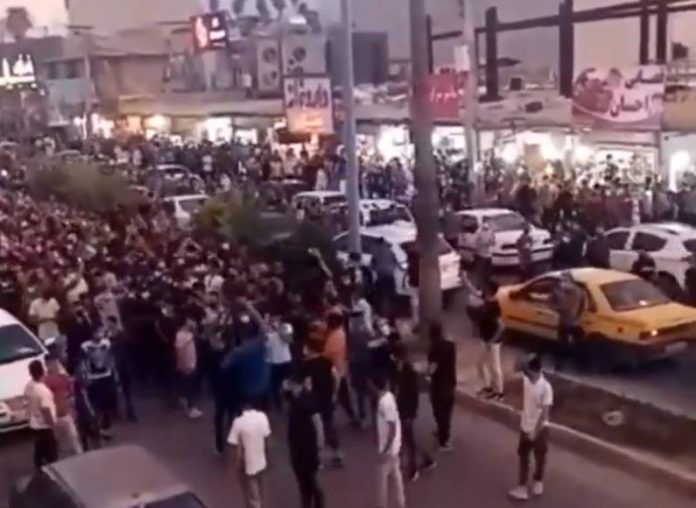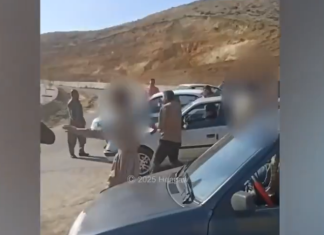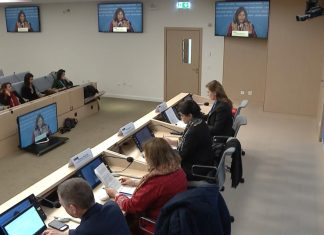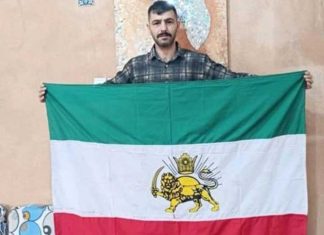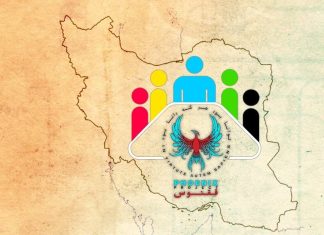A protest over severe water shortage and power cuts that started on July 15 in Hamidiyeh in the southwestern province of Khuzestan has now spread to 15 other cities in the province.
Antiriot police and security forces have brutalized protesters, killing several, injuring others, and arresting many residents.
The protesters are critical of the Islamic Republic for its mismanagement of the region’s water reservoirs, resulting in severe water scarcity and chronic drought.
Iranian Documentary Filmmakers Support Protests Over Water Shortage in Khuzestan
[aesop_image img=”https://kayhanlife.com/wp-content/uploads/2021/07/naimavi_khziri_mazraeh.jpeg” panorama=”off” credit=”The three young protesters killed by security forces. Kayhan London./ From right to left: Ali Mazrae, GHassem Khaziri, Mostafa Naimavi./” align=”center” lightbox=”on” captionsrc=”custom” captionposition=”left” revealfx=”off” overlay_revealfx=”off”]
Khuzestan has the richest water reservoirs in Iran, supplied by Karun River, the Arvand Rud, and the Maroon and Karkheh River systems. Water levels have dropped significantly in the marshlands and rivers, affecting farms and the entire economy of the province.
Khuzestan residents do not have access to a clean drinking water supply because of a flawed distribution system. Also, construction of the province’s sewage system, which started before the 1979 Islamic Revolution remains unfinished.
The water shortage and power cuts in the past few weeks have disrupted people’s lives in many cities in Khuzestan, which have been battling temperatures as high as 50 degrees Celsius.
The protests against the government’s mismanagement of the water crisis started in the province’s southern and western cities of Shadegan, Mahshahr, Susangerd, and Hoveyzeh, before spreading to Abadan, Khorramshahr, Ramhormoz, Izeh, Behbahan, and Dezful.
Law enforcement officials, plainclothes armed security agents, and antiriot police units have been clashing with the protesters since the start of the civil unrest nearly two weeks ago. Videos received show that fire on the protesters with live ammunition.
Friday 23rd July #Ahvaz #Khuzestan #Iran. Peaceful demonstration for water is met with a barrage of bullets from the security forces. #خوزستان_تشنه_است
# خوزستان_در_خون
@KayhanLondon @KayhanLife pic.twitter.com/8zfgqnwpzz— Nazenin Ansari (@NazeninA) July 23, 2021
According to official reports, seven protesters who lost their lives during the unrest have been positively identified. Footage published by an unnamed reporter allegedly shows plainclothes security police whisking away the body of a protester.
There is no official report on the exact number of protesters arrested and injured.
The protest initially started with chants against the government’s mismanagement of the water crisis, which has irreparably damaged parts of the Hawizeh Marshes, but the slogans have morphed into calls for an end to the Islamic Republic regime.
On the evening of July 20, thousands of people gathered in the city of Izeh, chanting, “We made a mistake to bring about a revolution,” “Death to Khamenei” (Iran’s Supreme Leader Ayatollah Ali Khamenei), and “We are ashamed, Reza Shah.”
Reza Shah (1878-1944), the founder of the Pahlavi Dynasty (he reigned from 1925 to 1979) ushered in a period of economic, political, social, and cultural progress for Iran.
Reza Shah and his son and successor, Mohammad Reza Shah’s (1919-1980) enacted a comprehensive development plan that transformed Khuzestan into one of the country’s most prosperous and progressive provinces.
The Islamic Republic’s propaganda machines have been trying to portray the spontaneous protests in Khuzestan, which have grown in size and scale in the past few weeks, as a controlled and organized secessionist movement. However, the protests and slogans shouted during the demonstration do not support the regime’s claims.
Some civil rights activists linked to the regime have launched fund-raising campaigns on social media to collect money for buying and shipping bottled water to the people of Khuzestan.
Ali Akbar Soleimani, Deputy Director of Engineering Department of the Passive Defense Organization of the Iranian Defense Ministry, recently said that the ministry had sent a fleet of tankers transporting water to the affected areas in Khuzestan.
These attempts by the government to calm the unrest have angered the people instead. The water problem is so critical that these are half measures by the state.
After a week of silence, Mr. Khamenei’s official Instagram account published a speech that he had delivered five years ago, in which he urged the country’s officials to resolve the problems facing Khuzestan residents.
Meanwhile, protests in Khuzestan have gained significant support among Iranians in the country and those living abroad. People on social media have expressed their support for the protesters, using several hashtags.
Many actors, artists, and athletes have posted messages on social media, urging people to support the protesters in Khuzestan. They have also called on the security forces and the police not to crack down on the protests or fire on people.
On July 20, a group of artists, writers, and actors gathered in front of the Iranian Artists’ House in Tehran to support the protesters in Khuzestan. Some 134 Iranian documentary filmmakers also released a statement supporting the ongoing protest over water shortage and power outages in Khuzestan.
Khuzestan is one of the wealthiest provinces in Iran. Most of the country’s oil and gas reserves are in Khuzestan. The province became the principal battleground shortly after the war broke out between Iran and Iraq in 1980. Many people affected by the war migrated to other provinces. Those who remained in Khuzestan were part of the forces at the frontline.
As part of its annual budget, a country typically allocates funds to reconstruction projects for its war-torn regions after the hostilities end. However, none of the Iranian governments since the end of the war in 1988 have made meaningful efforts and investments to rebuild the province’s infrastructure and help its residents.
Lack of scientific and expert approach to building dams, transporting water, and managing the country’s water reservoirs have turned the country’s most water-rich regions into an arid desert.
Ships could sail on the Karun River before the 1979 Islamic Revolution. The water has alarmingly receded at various parts of the river. Some sections of it have even dried up. Illogical dam projects on the Karkheh River have had adverse effects on Hawizeh Marshes on the Iran-Iraq border. While the Iraqi side of the marsh continues to be home to various animal species, the Iranian side has all but dried up.
Chronic haze is another environmental hazard that has plagued Khuzestan. The problem has grown in size, volume, and scale in recent years. In some parts of the province, severe haze stops traffic for hours, disrupts people’s lives, and hurts industrial facilities and businesses.
Deterioration of the province’s infrastructure, widespread unemployment, and hyperinflation has sparked large-scale protests in Khuzestan and other provinces in the country in the past few years.

